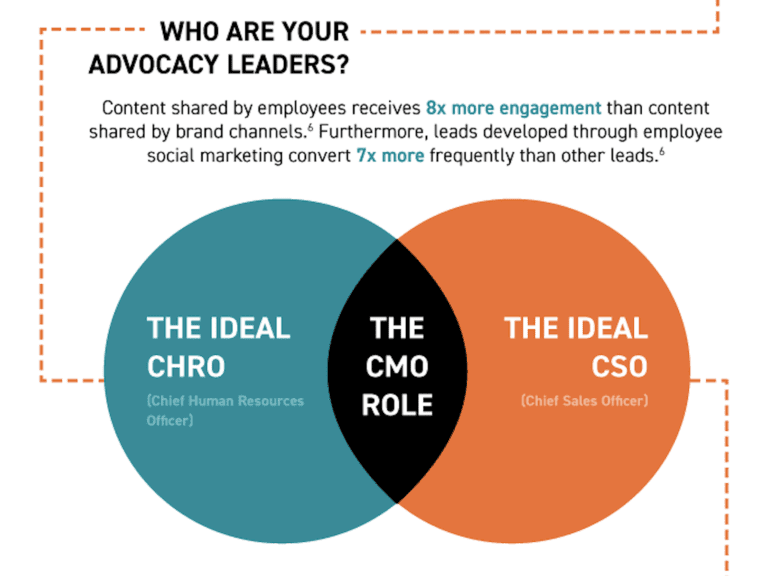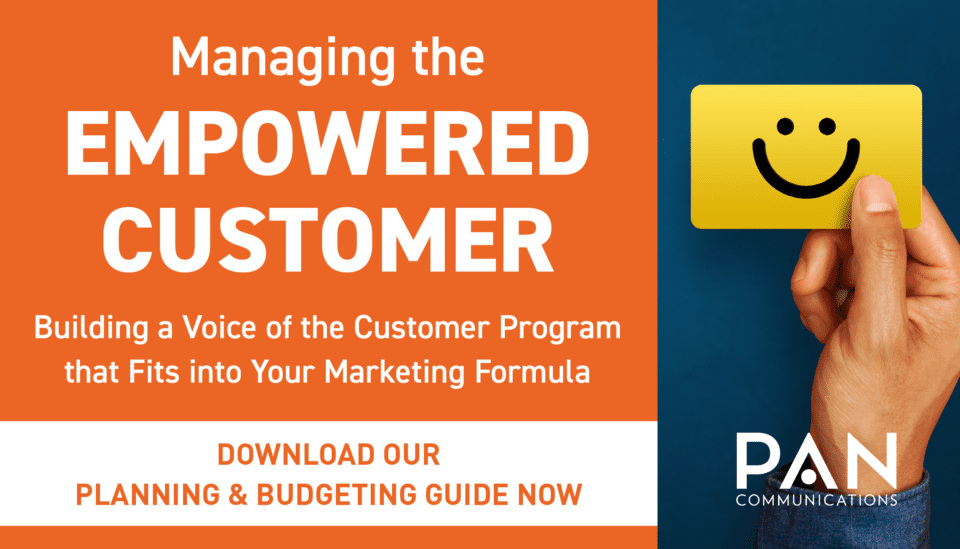Voice of the Customer (VoC) is critical in the experience economy. While many brands are prioritizing the customer experience, only a fraction have a Voice of the Customer program in place. Many organizations realize the benefits of building a customer advocacy program, which prioritizes what’s best for the customer. Building such a program requires listening and responding to customer feedback.
This is important now more than ever, as brands look to lean on existing customers to help refuel their brand and recover from the coronavirus pandemic. Customer needs are changing, and a Voice of the Customer program highlights the evolving needs and demands of this important group. Plus, customers are a great source for word of mouth, referrals and organic growth – three areas of support that some companies need to stay afloat.
Most organizations, however, aren’t sure how to execute a Voice of the Customer program to fuel customer advocacy. In this article, we break down seven steps to building a Voice of the Customer program so that it may substantially impact all decision-making across the enterprise.
What Does Voice of the Customer Mean?
Voice of the Customer describes the feedback you receive from customers related to their experience and expectations of your brand. Its foundation is customer-centric, focusing on their needs, motivations, behaviors and challenges.
Your customers are talking, so it’s time to listen. They crave genuine, personalized experiences and you can better design these by analyzing and acting on the feedback they provide.
Why Care About Voice of the Customer?
In the experience economy, nothing means more than how you make customers feel. In fact, the “The Experience Impact” survey reported that 66 percent of consumers care more about experience than cost. Price is certainly a contributing factor to any customer, but the experience allows them to clearly see the value of their purchase.
Having a customer experience strategy isn’t just a good idea; it’s a necessity to survive and grow. You need to connect with customers in a new way that proves you know their needs and are aware of their struggles.
Without integrating their feedback into your content marketing, product roadmaps, customer service plans and basically every part of your business, you’re missing the boat. Instead, you’re developing content and products in a vacuum, without considering the wants and needs of your buyer.

7 Steps to Building a Powerful Voice of Customer Program
It’s time to take action and either establish or improve your VoC program. Let’s look at how to do so in just seven steps.
Step One: Define What VoC Means to Your Brand
With your brand’s personality defined and your ideal customer profile established, it’s time to define what kind of customer feedback you’re looking for. Start by asking the question, “What is the value of a VoC program?”
Will it be used for product roadmaps, to develop better content, improve the customer experience or inspire new services? In addition, identify what will motivate customers to participate. Start a conversation with customers about why their feedback matters. It lays the foundation for when you come to them and ask for their opinions.
Step Two: Set a Strategy
Before you begin collecting data and analyzing it, you need to develop a long-term VoC strategy. In this strategy, you’ll need to define the following:
- Objectives/goals and how to measure these with key performance indicators (KPIs); each element of your VoC program should be tied to one of the three R’s: revenue, reputation management or retention
- Key business issues that need to be addressed to build the right type of program
- Activities to launch to obtain feedback, typically a survey
- Plans for centralizing data streams
Designing a VoC strategy includes the input of many stakeholders and can be a cumbersome first step, but an essential one.
Step Three: Centralize Your Program
In developing the strategy, you may have received input from many different parties, but you’ll need to designate an integrated team to execute it. Not only do you need to centralize the team that will be responsible, but you’ll also want to do the same for the tools you’re using. This is not a process that should live in a silo.
Bring together your head of marketing, head of sales and your employees to drive a well-rounded VoC program.
Still unsure about why advocacy is important across your organization? View our infographic “It Takes a Team: Why Advocacy Marketing Should Touch Every Department“
Step Four: Determine Questions for Your Survey That Align with Your Goals
To get feedback, you’ll need to devise a survey, one that aligns with your goals. Asking the right customer questions can help you identify problem areas and facilitate change. Your questions should be shaped around “how” and place the customer in a position to offer meaningful advice. If you limit questions to validating existing company behaviors, you won’t really learn what’s working and what’s not.
This step should map to your overall content pillar strategy. What are the key topics that your content program addresses for your customers? Does your survey take their needs and challenges into consideration?
Step Five: Engage Your Customers
Now that you have developed the survey, it’s time to engage your customers so they’ll participate. If you have followed step one, then you’ve already laid the groundwork. You’ll need to understand what can motivate them to respond.
First, consider the channels you can use. Most of the time, you don’t want your survey open to just anyone – they need to be your actual customers with experiences to share. The most used channel is email, but you could also consider SMS messages if you have opt-ins. You can also complement these efforts with outreach by account managers or customer success specialists.
As you communicate with customers, be honest and transparent about why you want their feedback. Make sure they understand the value they bring when they relay their opinions. Put the focus on them, not your business.
Further, your survey should not be just a one-off campaign. It should be incorporated into the customer journey, so you are always getting new responses. Find ways to bring your VoC efforts into every step from awareness, to purchase, to loyalty.
Step Six: Take Action
Once your survey is receiving results, it’s time to bring together your VoC team to analyze and assess. Using some tools to help you dig into the data is recommended, as you’ll be dealing with a lot of data. You need to find trends in the feedback and align them back to your goals. Then simply listen to what they have to say and develop plans of action.
For example, if a majority of customers respond that your onboarding isn’t sufficient, then it’s time to revisit this and see how you can improve it.
Remember, each area you measure should align with the three R’s previously discussed.
Step Seven: Update Your Customers
After you’ve begun to initiate changes based on their feedback, let your customers know about it. They’ll feel appreciated that you took their responses to heart and be energized to see the updates you’ve made across all aspects of the business.
The Voice of the Customer is vital to sustainable, long-term growth. By incorporating their thoughts and feelings into your business model, you’ll only improve. Ready to execute or elevate your VoC program? Start by downloading our eBook, “Managing the Empowered Customer: How to Build a Customer Program that Fits Your Marketing Formula.”





